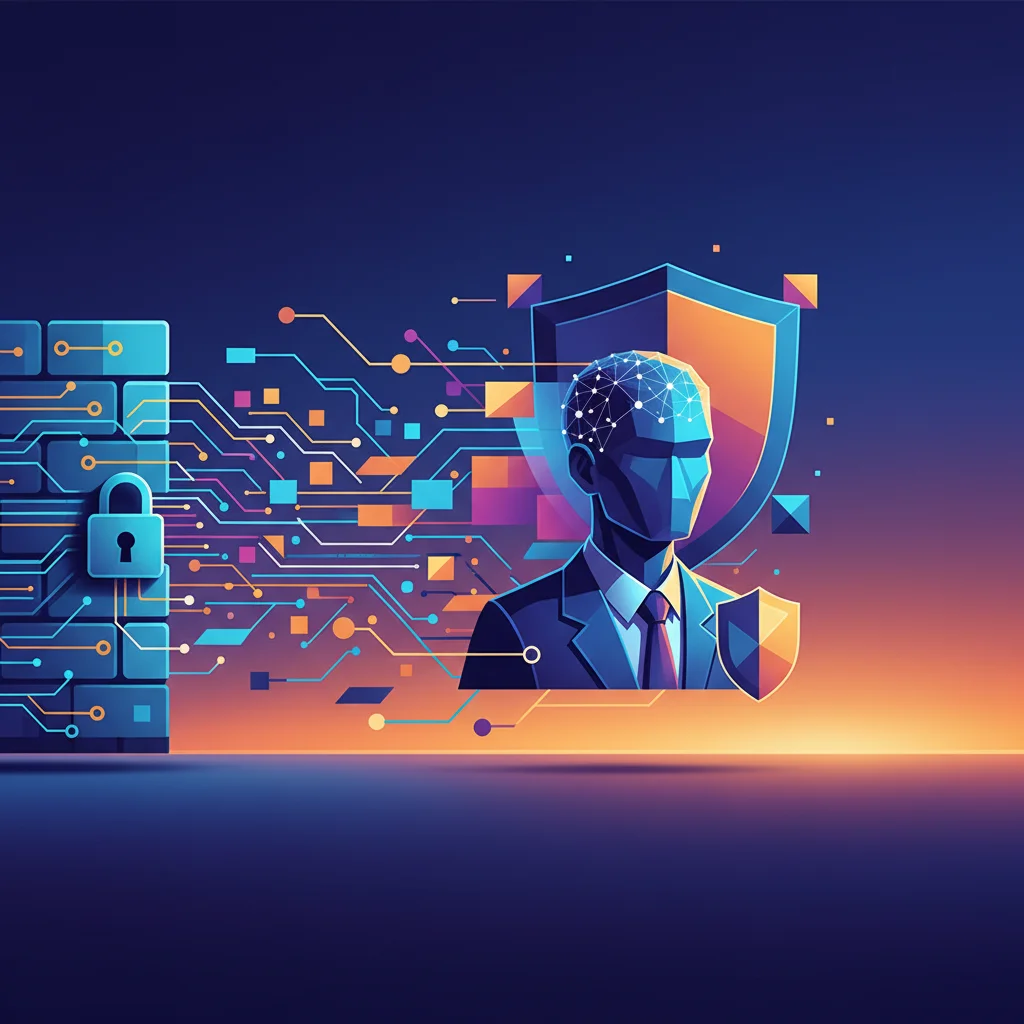
Beyond the Firewall: Why Your CEO is Now Your Chief Cybersecurity Officer
It used to be simple. The C-suite focused on strategy, growth, and shareholder value. Cybersecurity was a line item in the IT budget, a complex and technical domain relegated to a team in the basement. That era is definitively over. A recent, stark warning from the UK’s National Cyber Security Centre (NCSC) has made it crystal clear: in today’s hyper-connected world, the CEO must be the ultimate guardian of the company’s digital fortress. It’s no longer an IT problem; it’s a fundamental business survival issue.
The NCSC, a branch of the UK’s intelligence agency GCHQ, has urged business leaders to take “digital resilience” with the utmost seriousness following a spate of high-profile incidents involving major British groups. This isn’t just another cautionary tale. It’s a seismic shift in how we must view corporate responsibility. When your entire operation runs on software, your data lives in the cloud, and your competitive edge is built on innovation, a single cyber attack can unravel everything.
For developers, tech professionals, entrepreneurs, and even the general public, this message from the top is critical. It signals a new era of investment, scrutiny, and culture around cybersecurity—one that will shape how we build, deploy, and manage technology for years to come.
The New Battlefield: Why “Good Enough” Security Is a Recipe for Disaster
Why the sudden urgency? The threat landscape hasn’t just evolved; it has mutated into something far more sophisticated and perilous. The traditional image of a lone hacker in a hoodie is woefully outdated. Today’s adversaries are well-funded, highly organized, and often state-sponsored. They leverage cutting-edge technology, including artificial intelligence and automation, to launch attacks at an unprecedented scale and speed.
Consider the modern enterprise. It’s no longer a castle with a moat. It’s a sprawling, interconnected ecosystem of:
- Cloud Infrastructure: The shift to the cloud offers incredible flexibility and scalability, but also expands the attack surface exponentially. Misconfigured buckets, unsecured APIs, and shared tenancy models are common entry points.
- Remote Workforces: The pandemic normalized remote work, dissolving the traditional network perimeter. Employees now connect from countless locations on varied networks, making centralized security a monumental challenge.
– SaaS Proliferation: The average company uses dozens, if not hundreds, of Software-as-a-Service (SaaS) applications. Each one is a potential backdoor into your network, a new link in a supply chain that can be compromised.
The financial stakes are staggering. The 2023 IBM Cost of a Data Breach Report found that the global average cost of a data breach reached an all-time high of $4.45 million. For startups and small businesses, a breach of this magnitude isn’t just a financial setback; it’s often an extinction-level event. This is the new reality that CEOs can no longer afford to ignore.
From the Server Room to the Boardroom: The CEO’s New Mandate
The NCSC’s guidance underscores a critical point: cybersecurity is a governance issue. Delegating it entirely to a CISO or IT Director without genuine board-level understanding and oversight is an abdication of duty. Why? Because the consequences of a breach are not just technical; they are existential.
- Reputational Damage: Trust is a company’s most valuable asset. A major breach can shatter customer confidence, leading to churn and long-term brand damage.
- Operational Paralysis: Ransomware attacks can grind business operations to a complete halt, stopping production, sales, and customer service in their tracks for days or even weeks.
- Regulatory & Legal Nightmares: With regulations like GDPR and CCPA, a data breach comes with the certainty of massive fines, legal battles, and intense regulatory scrutiny.
A CEO who doesn’t understand these risks is flying blind. They don’t need to know how to write a single line of programming code, but they must be able to ask the right questions, challenge their teams, and allocate resources effectively. They need to champion a culture where security is not a barrier to innovation, but an enabler of it.
The Double-Edged Sword: Artificial Intelligence & Machine Learning
No discussion of modern cybersecurity is complete without focusing on the transformative impact of artificial intelligence. AI and machine learning (ML) are the ultimate dual-use technologies in this domain, empowering both attackers and defenders in a relentless arms race.
How Attackers Leverage AI:
- Hyper-Realistic Phishing: Generative AI can create incredibly convincing emails, text messages, and even voice clones, making social engineering attacks far more effective.
- Automated Hacking: AI can be used to scan for vulnerabilities, crack passwords, and move through networks at machine speed, far outpacing human defenders.
- Evasive Malware: ML algorithms can be used to create polymorphic malware that constantly changes its code to evade signature-based detection tools.
How Defenders Fight Back with AI:
- Anomaly Detection: Machine learning is brilliant at establishing a baseline of normal network activity and instantly flagging deviations that could signal a breach.
- Threat Intelligence: AI can analyze billions of data points from across the globe to identify emerging threats, predict attack vectors, and prioritize alerts.
- Automated Response: Security Orchestration, Automation, and Response (SOAR) platforms use AI and automation to instantly quarantine infected devices or block malicious IP addresses, reducing response time from hours to seconds.
For entrepreneurs and startups building the next generation of software, integrating security from day one—a practice known as DevSecOps—is paramount. This means using AI-powered tools to scan code for vulnerabilities during the programming phase, not after deployment. It’s about building resilience directly into the DNA of your product.
A Practical Playbook for Digital Resilience
So, what should a leader do? Moving from awareness to action is key. It’s about building “digital resilience”—the ability to prepare for, withstand, and recover from a cyber incident. Here is a high-level framework that every organization, from a fledgling startup to a global enterprise, should consider.
This table outlines the core pillars of a modern, resilient cybersecurity strategy:
| Pillar of Resilience | Key Actions for Leadership |
|---|---|
| Govern & Lead | Establish clear board-level oversight. Treat cyber risk as a core business risk. Foster a security-first culture through training and communication. |
| Identify & Protect | Invest in a comprehensive asset inventory (you can’t protect what you don’t know you have). Implement foundational controls like multi-factor authentication (MFA) and a Zero-Trust architecture. |
| Detect & Analyze | Deploy modern security software that uses AI and machine learning for real-time threat detection. Ensure 24/7 monitoring of critical systems, whether in-house or through a managed service. |
| Respond & Recover | Develop and regularly test an Incident Response (IR) plan. Don’t wait for a crisis to figure out who to call. Have backups that are isolated and immutable. |
According to guidance from the NCSC, regular tabletop exercises where the leadership team simulates a response to a major breach are one of the most effective ways to build this resilience muscle. It’s a fire drill for the digital age, and it’s absolutely essential.
The Startup’s Conundrum: Move Fast, But Don’t Break Your Security
For startups and entrepreneurs, the pressure to achieve product-market fit and scale quickly can push cybersecurity to the bottom of the priority list. This is a catastrophic mistake. A single breach can not only wipe out your funding and user data but also render your innovative technology and intellectual property worthless.
The good news is that building a secure startup is more accessible than ever. The rise of cloud-native security tools and affordable SaaS solutions means you don’t need a massive in-house security team from day one. The key is to embed security into your innovation pipeline:
- Secure by Design: Make security a requirement in the product design and programming phases, not an afterthought.
- Leverage Automation: Use automated tools to scan your code and cloud configurations for common vulnerabilities.
- Educate Your Team: Your first line of defense is a security-aware employee. Basic training on phishing and password hygiene is non-negotiable.
Investors are also getting smarter. Increasingly, VCs are conducting cybersecurity due diligence before cutting a check. Demonstrating a mature security posture can become a competitive advantage in the hunt for capital.
The Final Word: Ownership Starts at the Top
The warning from the UK’s top cyber agency is not just for British companies; it’s a global wake-up call. The digital world is fraught with risk, but it is also the engine of all future growth and innovation. We cannot disconnect or retreat.
The only path forward is to build resilient organizations capable of thriving in this challenging environment. That process doesn’t start in the server room. It starts in the boardroom, with a CEO who understands the stakes, embraces their role as the chief defender of the organization’s digital future, and leads from the front. The age of plausible deniability is over. The age of digital ownership has begun.


